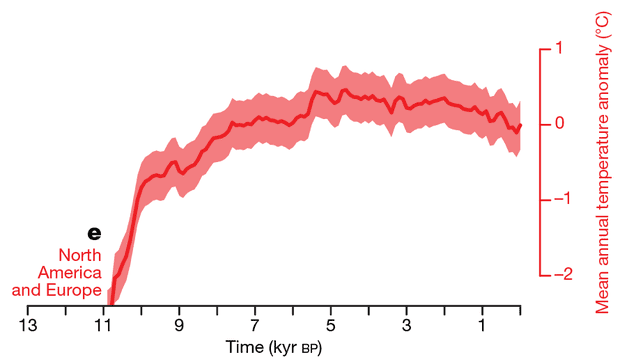
In order to understand today’s global warming, we need to understand how Earth’s temperatures varied in the past. How does the rapid warming we see now compare with past natural climate changes? Also, how long have humans been having an impact on the climate? These are some questions that can be answered through paleoclimate studies. Paleoclimate research uses natural measurements of the Earth’s temperature. Clever scientists are able to estimate how warm or cold the Earth was far back in time, way before we had thermometers.
Readers of this column are probably familiar with some of these paleoclimate techniques that may use ice cores or tree rings to infer temperature variations. A different method that uses plant distribution was a technique used in a very recent study published in Nature. That technique used pollen distribution to get an understanding of where plant species thrived in the past. Those distributions gave them insights about the temperatures. On the surface, it’s pretty straightforward. Tropical plants differ in major ways from plants that live in, say, the tundra. In fact, plants that thrive where I live (Northern USA) differ from plants that populate landscapes further south.
The authors used the pollen of various plants to help determine where they thrived in the deep past. I communicated with Dr. Bryan Shuman, from the University of Wyoming and I asked him why they used pollen. He responded:
Pollen works well as a temperature recorder because plants have specific temperature ranges that they can tolerate. By combining the temperature requirements for dozens of different plants that we can recognize from their pollen, we are able to narrow down the possible temperatures at the location where the pollen was collected.
We use pollen rather than other plant fossils because pollen is widespread each spring and settles to the lake bottom where it is surprisingly resistant to degradation. We wash the samples of lake bottom mud with acids that can dissolve minerals, but the pollen can tolerate it. It lasts up to millions of years with degrading.

Lead author Jeremiah Marsicek, Bryan Shuman, and others collecting mud cores.
What the authors found was very interesting. Using data from 642 sites across North America and Europe, the temperatures they found closely matched those expected from computer simulations. They found that throughout most of the Holocene period (the last ~11,000 years), the Earth was warming very slightly. Only in the last ~2000 years has the Earth been in a cooling period (which probably would have continued except that human emissions of greenhouse gases have now reversed the cooling).

Temperature in North America and Europe over the past 11,000 years based on pollen reconstruction data. Illustration: Marsicek et al. (2018), Nature.
The authors attempted to put the recent warming (last century or so) into context. They found that the recent temperatures are much higher than temperatures over the past 11,000 years. In fact, according to their calculations, 2016 was warmer than 99.41% of all simulated Holocene years.
This finding is profound. First of all, it means that human greenhouse gas emissions were easily able to overturn what should be a natural cooling trend. Second, the warming we have caused is far outside of the natural range. According to Dr. Shuman:
Posted by John Abraham on Monday, 19 February, 2018
 |
The Skeptical Science website by Skeptical Science is licensed under a Creative Commons Attribution 3.0 Unported License. |